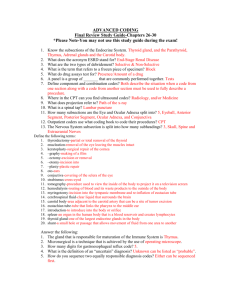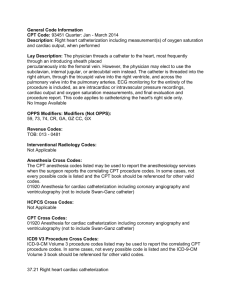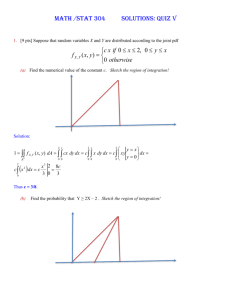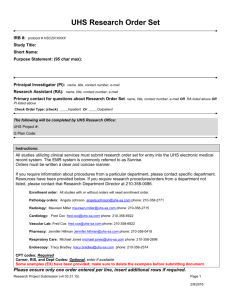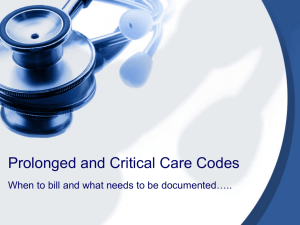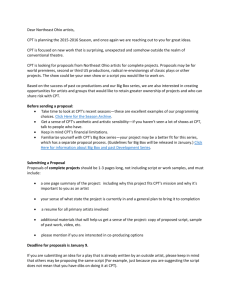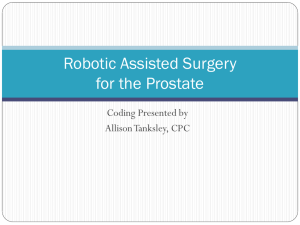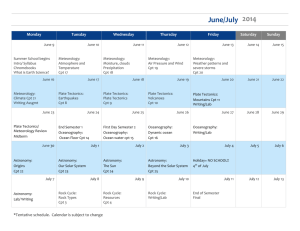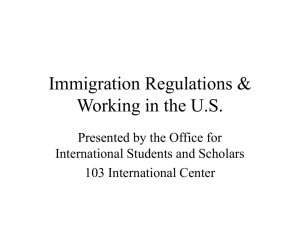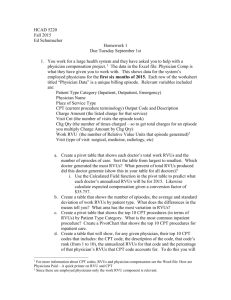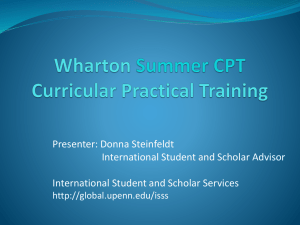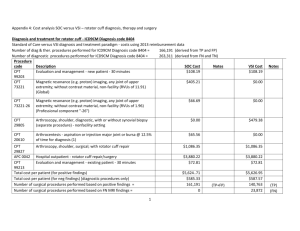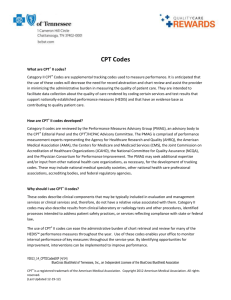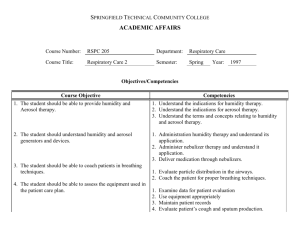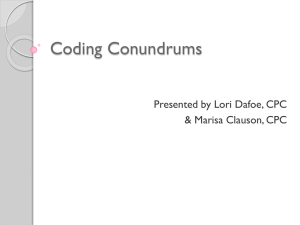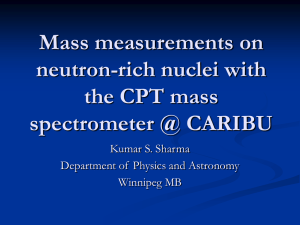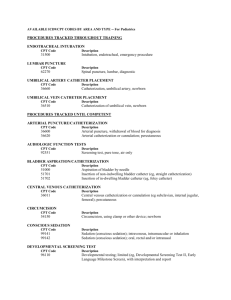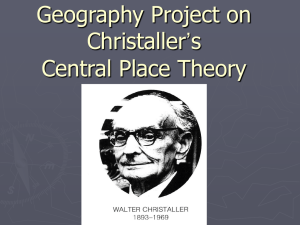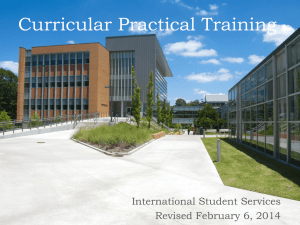Document
advertisement
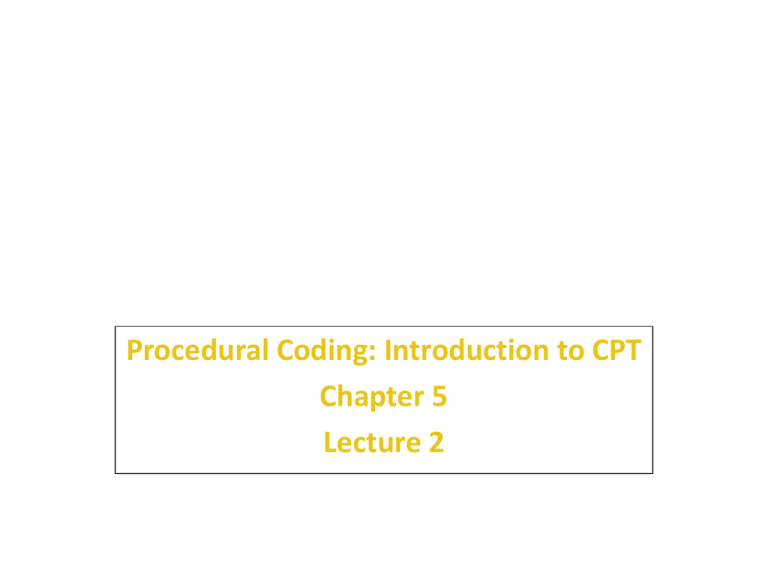
Procedural Coding: Introduction to 5 CPT Chapter 5 Lecture 2 5.3 Format and Symbols • CPT uses a semicolon and indentions when a common part of a main entry applies to entries that follow (p153) • Some codes and descriptors are followed by indented see or use entries in parentheses, which refer the coder to other codes (p153) • Descriptors often contain clarifying examples in parentheses, sometimes with the abbreviation e.g. (p154) 5-10 5.3 Format and Symbols (Continued) 5-11 • Seven symbols are used in CPT (p154): 1. ● (a bullet or black circle) indicates a new procedure code 2. ▲(a triangle) indicates that the code’s descriptor has changed 3. ►◄ (facing triangles) enclose new or revised text other than the code’s descriptor 4. + (a plus sign) before a code indicates an add-on code that is used only along with other codes for primary procedures • Primary procedure—most resource-intensive CPT procedure during an encounter • Secondary procedure—additional procedure performed • Add-on code—procedure performed and reported in addition to a primary procedure 5.3 Format and Symbols (Continued) 5-12 • Seven symbols are used in CPT (continued): 5. (a bullet in a circle) next to a code means that conscious sedation is a part of the procedure that the surgeon performs • Conscious sedation—moderate, drug-induced depression of consciousness 6. (a lightning bolt) is used for codes for vaccines that are pending FDA approval 7. # (a number sign) indicates a resequenced code • Resequenced—CPT procedure codes that have been reassigned to another sequence 5.4 CPT Modifiers (p154) 5-14 • A CPT modifier is a two-digit number that may be attached to most five-digit procedure codes – Modifiers communicate special circumstances involved with procedures • A procedure has two parts: 1.Technical component (TC)—reflects the technician’s work and the equipment and supplies used in performing it 2.Professional component (PC)—represents a physician’s skill, time, and expertise used in performing it 5.5 Coding Steps (p158) 5-15 • The six general steps for selecting correct CPT procedure codes: Step 1. Review complete medical documentation Step 2. Abstract the medical procedures from the visit documentation Step 3. Identify the main term for each procedure Step 4. Locate the main terms in the CPT index Step 5. Verify the code in the CPT main text Step 6. Determine the need for modifiers (p154-7) 5-16 5.6 Evaluation and Management Codes • E/M codes (evaluation and management codes)—cover physicians’ services performed to determine the optimum course for patient care (159) • Key component (p166)—factor documented for various levels of evaluation and management services • Key components for selecting E/M codes: – The extent of the history documented – The extent of the examination documented – The complexity of the medical decision making 5.6 Evaluation and Management Codes5-17 (Continued) • Consultation—service in which a physician advises a requesting physician about a patient’s condition and care • Outpatient—patient who receives health care in a hospital setting without admission 5.7 Anesthesia Codes (p171) • The codes in the Anesthesia section are used to report anesthesia services performed or supervised by a physician • Two types of modifiers are used with anesthesia codes (p172): 1. Modifier that describes the patient’s health status 1. Physical status modifier—code used with procedure codes to indicate a patient’s health status 2. Standard modifiers 5-18 5.7 Anesthesia Codes (Continued) • Patient’s physical status is selected from this list: – – – – P1: Normal, healthy patient P2: Patient with mild systemic disease P3: Patient with severe systemic disease P4: Patient with severe systemic disease that is a constant threat to life – P5: Moribund patient who is not expected to survive without the operation – P6: Declared brain-dead patient whose organs are being removed for donation purposes 5-19 5.8 Surgery Codes (p173) 5-20 • Codes in the Surgery section are used for surgical procedures performed by physicians • Surgical package (or global surgery rule)– combination of services included in a single procedure code – Global period—days surrounding a surgical procedure when all services relating to the procedure are considered part of the surgical package – Separate procedure—descriptor used for a procedure that is usually part of a surgical package but may also be performed separately 5.8 Surgery Codes (Continued) 5-21 • Reporting surgical codes: – Bundling—using a single payment for two or more related procedure codes – Unbundling—incorrect billing practice of breaking a panel or package of services/procedures into component parts – Fragmented billing—incorrect billing practice in which procedures are unbundled and separately reported 5.9 Radiology Codes (p178) 5-22 • The Radiology section of CPT contains codes reported for radiology procedures either performed by or supervised by a physician • Radiology codes follow the same types of guidelines as noted in the Surgery section – Contain a technical component and a professional component 5.10 Pathology and Laboratory Codes 5-23 (p179) • Cover services provided by physicians or by technicians under the supervision of physicians • Panel—single code grouping laboratory tests frequently done together – To report a panel code, all the indicated tests must have been done, and any additional test is coded separately 5.11 Medicine Codes (p181) • Codes for the many types of evaluative, therapeutic, and diagnostic procedures that physicians perform – Immunizations require two codes from the Medicine section, one for administering the immunization and the other for the particular vaccine or toxoid that is given • Ancillary services—services used to support a diagnosis 5-24 5.12 Category II and Category III Codes5-25 (p182) • Category II and Category III codes both have five characters—four numbers and a letter – Category II codes are for tracking performance measures to improve patients’ health – Category III codes are temporary codes for new procedures that may enter the Category I code set if they become widely used in the future


